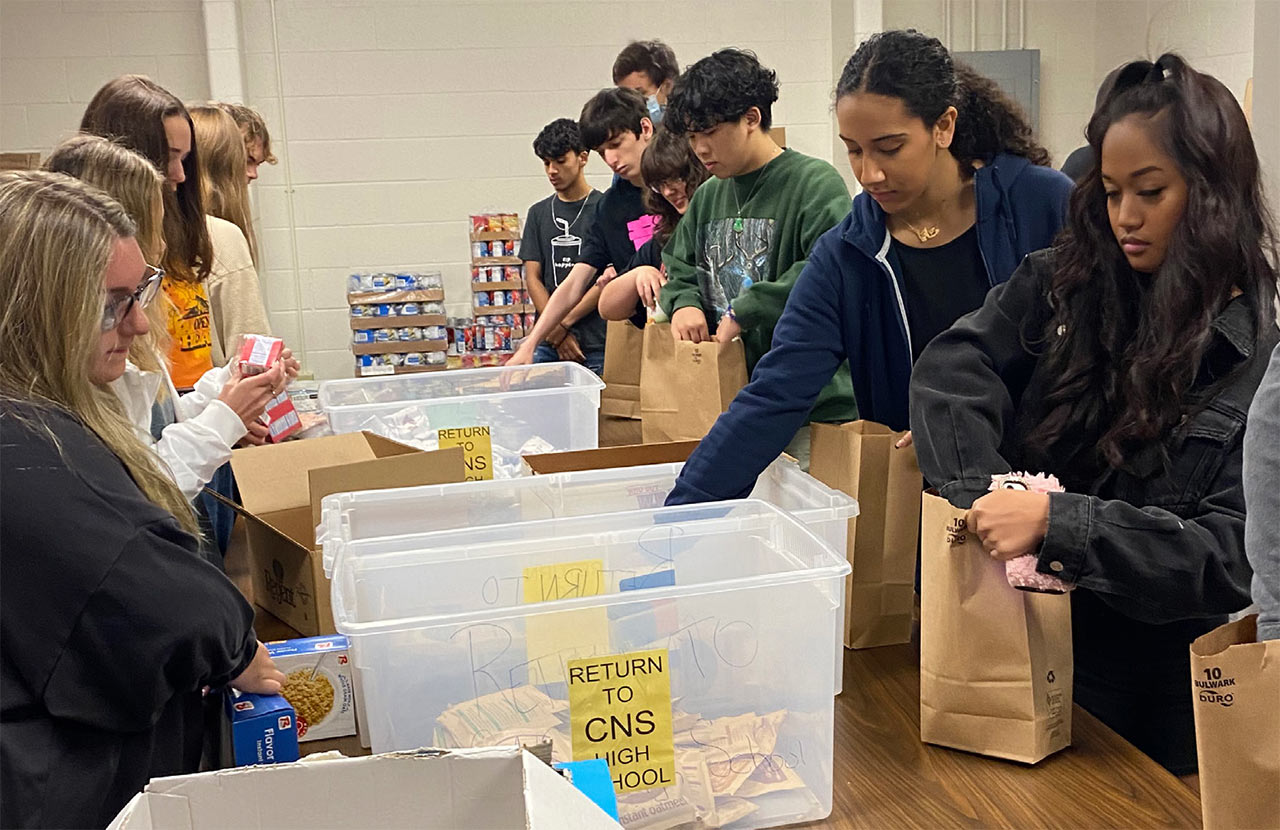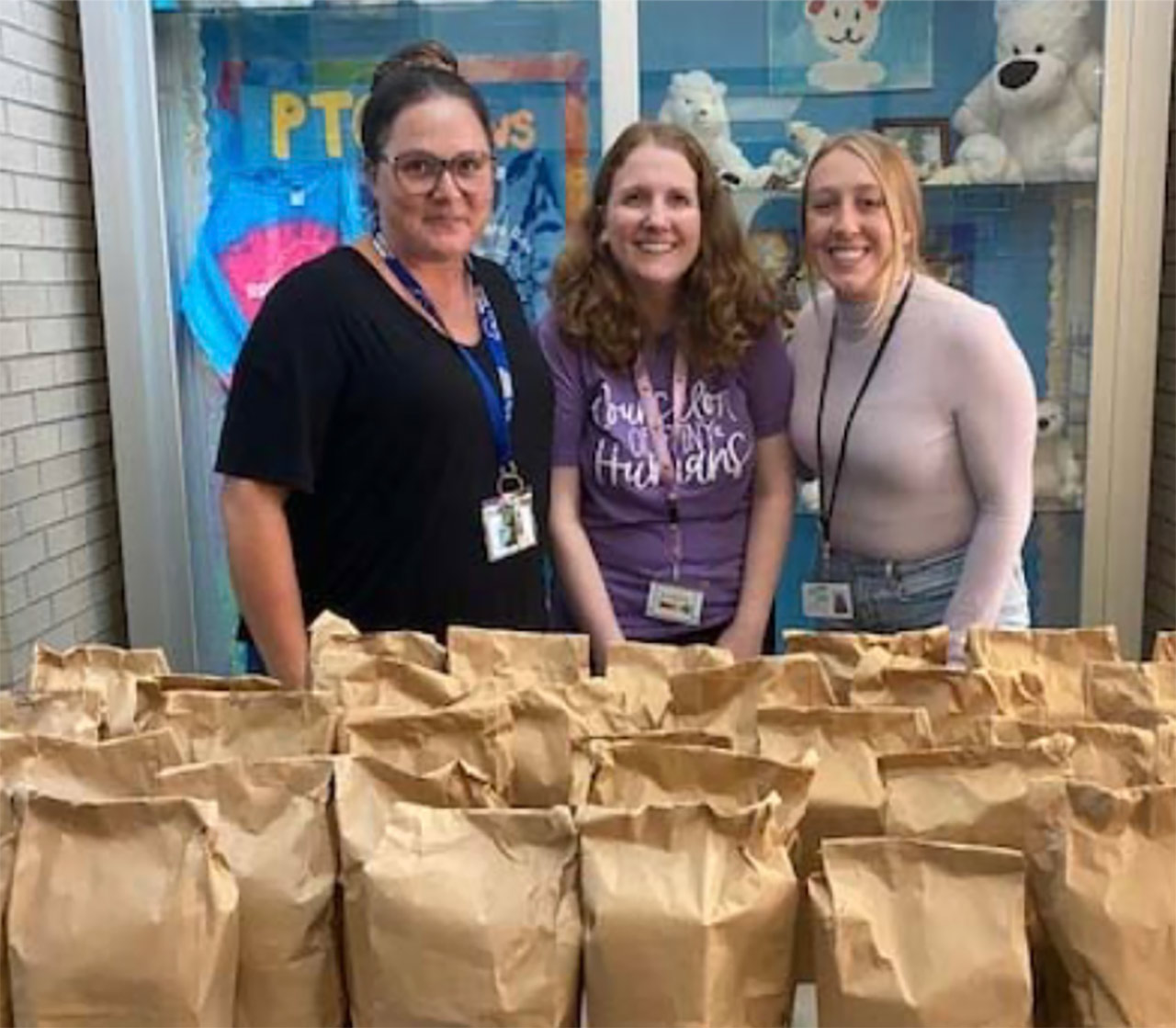When hunger is a barrier to learning

ocial studies teachers Matt Root and Mark Parrish wanted their Participation in Government students at Cicero-North Syracuse High School to use their mandatory community service time more meaningfully. They found the solution in a cafeteria closet.
The North Syracuse district boasts a median household income of $76,523, well above the statewide average of $68,304. Root and Parrish know the other side of those numbers. Nearly 30 percent of district students are eligible for free or reduced lunches. Many live in poverty.
The veteran educators, both members of the North Syracuse Education Association, decided they could combat hunger with help from their government students. Each week, these students would use their community service hours to assemble and distribute food for their peers in need. Root says the program was mind-blowing for his students.
“They couldn’t believe there were people in this building without enough to eat,” he said.

What’s more, too many aren’t accessing free school meals because of stigmas, literacy and language barriers, and administrative burdens that keep families from submitting an application in the first place. That’s why NYSUT has joined a coalition to advocate for some $200 million in the upcoming state budget to provide free school meals for every student, regardless of socioeconomic status.
That funding would dovetail perfectly with programs like the CNS food pantry, which began in January 2020 with 45 snack packs per week distributed at the high school. Word soon spread, and additional schools were added to the delivery route. A makeshift food pantry was started in a cafeteria closet, where the government students could store the donations from local food banks.
Then COVID-19 hit and demand skyrocketed.
At the height of the pandemic, Root and Parrish were working with union volunteers to pack 200 bags each week to feed hungry district families. River Valley Foods, a full-service grocery distributor, signed up to provide donations, and the team shifted from packing snacks to filling bags with ingredients to make balanced meals. In 22 weeks, the small team of volunteers distributed 60,000 pounds of food.
“That taught me how to do this at the school full-time,” Root said.
Last year, Root and Parrish had a team of 280 student volunteers. The program has scaled up slowly, adding new schools and more student staff each year — and moving out of the cafeteria closet and into a designated classroom.
This year, the teachers hope to involve all 600 seniors and serve all six elementary schools, both middle schools and the high school.
Roxboro Road Elementary School was one of the first schools to sign on, with help from NSEA member Kerry Delduchetto, an elementary school counselor.
“The extra food really helps families when they can’t rely on school lunches,” said Delduchetto. “It is eye opening to see the levels of food insecurity in the community.”
Former CNS student Maddy Manz said many of her fellow seniors started off lukewarm on the idea of volunteering in the basement pantry. But then, those same seniors started to get feedback.
“There was definitely a change in the atmosphere and a change in people’s attitude,” Manz recalls. “Now, people wanted to get down to that room, so they could help more people.”

Source: Feeding America